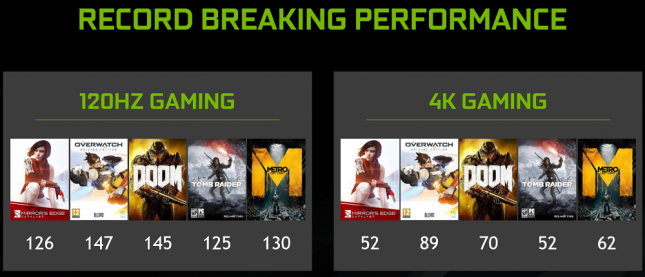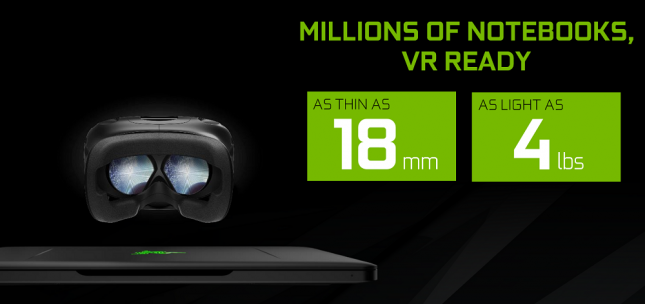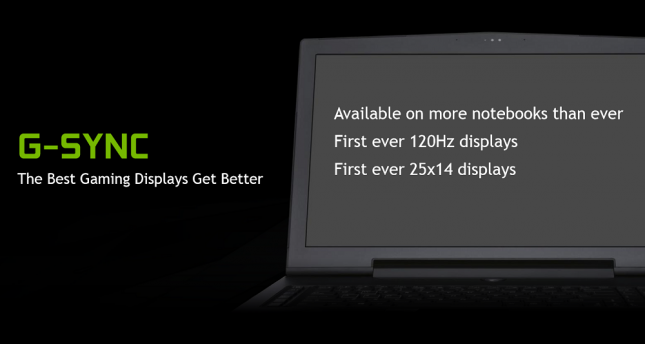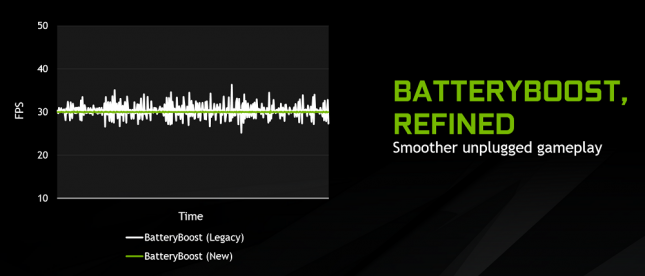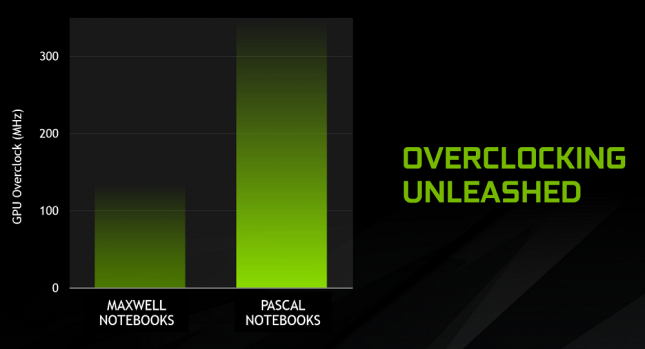NVIDIA Announces GTX 1080, 1070 & 1060 Pascal Gaming Notebooks
GeForce 10-Series Parts Arrive in Gaming Laptops
NVIDIAs desktop Pascal based video cards, the GeForce GTX 1080, GTX 1070 and GTX 1060, have shown that NVIDIAs latest generation of GPUs are no joke. Its no big surprise that NVIDIA would be placing derivatives of these GPUs into gaming notebooks and the release of their new GTX 10-series mobile parts is here.
NVIDIA wont be using any M versions of the Pascal GP104 and GP106 GPUs this time around. That means gaming notebooks using the GeForce GTX 1080 (GP10), GTX 1070 (GP104) and the GTX 1060 (GP106) are going to be available in gaming notebooks from pretty much every OEM and system builder in the World. NVIDIA has 90-95% of the discrete graphics card market share for gaming notebooks, so that is pretty much a given. With the desktop PC market in general still shrinking, the NVIDIA GeForce GTX 10-Series coming to gaming notebooks could prove to be a big deal.
While NVIDIA will be using the same exact GPU used on desktops, they will be adjusting some of the speeds and feeds for those parts. Adjusting the clock speeds and CUDA core configurations to ensure they operate at a lower TDP for when they are placed into mobile gaming notebooks is a must. Since the NVIDIA GeForce 10-Series cards has easily outperformed the competition from AMD at those cards price points, it shouldnt come as any surprise that these GPUs will be breaking pretty much every performance benchmark run in a notebook.
Take a look at the key specifications:
| GTX 1080 (Mobile) |
GTX 1070 (Mobile) |
GTX 1060 (Mobile) |
GTX 1080 (Desktop) |
GTX 1070 (Desktop) |
GTX 980M (Mobile) |
|
| CUDA Cores | 2560 | 2048 | 1280 | 2560 | 1920 | 1536 |
| Boost Core (MHz) | 1733 | 1645 | 1670 | 1733 | 1683 | 1127 |
| Base Core (MHz) | 1556 | 1442 | 1404 | 1607 | 1506 | 1038 |
| Perf. (TFLOP) | 7.9 | 5.9 | 3.5 | 8.2 | 5.7 | 3.18 |
| Memory | 8GB | 8GB | Up to 6GB | 8GB | 8GB | Up to 4GB |
| Memory Clock | 10Gbps | 8Gbps | 8Gbps | 10Gbps | 8.0Gbps | 5Gbps |
| Memory Bandwidth | 320 GB/s | 256GB/s | 192GB/s | 320 GB/s | 256GB/s | 160GB/s |
| Memory Bus | 256-bit | 256-bit | 192-bit | 256-bit | 256-bit | 256-bit |
| Architecture | Pascal | Pascal | Pascal | Pascal | Pascal | Maxwell |
| Process Node | 16nm | 16nm | 16nm | 16nm | 16nm | 28nm |
| DirectX Version | 12.0 | 12.0 | 12.0 | 12.0 | 12.0 | 12.0 |
| TDP | ~150W | ~115W | ~75W | 180W | 165W | ~150W |
The mobile versions of these GPUs use the same overall ASIC design as their desktop cards brethren, though the specifications need to be tweaked a bit for them to fit into the power envelope required by laptops designers. The good news is that the TDP on the Geforce GTX 1080 part is just 180W, a massive drop from the GeForce GTX 980 Ti that was 250W. This means that the flagship GeForce GTX 1080 parts used in gaming notebooks will still have all the benefits from the 16nm FinFET manufacturing process along with the ultra-fast GDDR5 memory. Its tough to compare mobile and desktop TDPs as on mobile platforms the cooling solution is not counted and other board components might not be counted in the measurement.
It also means that millions of VR ready notebooks are going to be flooding the market and they arent the big bulky gaming notebooks of yesteryear. These new 2016 model year gaming notebooks start out at just 18mm thick and as light as 4 pounds. If you havent updated your gaming notebook in several GPU generations the GTX 10-series release might be upgrade reason youve been waiting for.
NVIDIA G-Sync (Basically Adaptive Sync since there is no G-Sync module needed on notebook displays that are directly connected to the GPU right?) is still supported, but many gaming notebooks will be rocking 120Hz displays and 2560×1440 display resolutions. The days of lowering your notebooks screen resolutions to get respectable gaming performance are over and that is great to see.
GPU makers are never a fan of gaming unplugged on notebooks, but there are times in a notebooks life where unplugging gaming will take place. NVIDIA BatteryBoost technology has been around for years, but they have taken the time to make improvements with the Pascal GPUs. The new Pascal architecture will give you up to 30% more battery life than last generation Maxwell GPUs, but it is also smoother thanks to BatteryBoost refinements.
The new GeForce GTX 10-series GPUS are also overclocking friendly as NVIDIA has promised factory overclocking support with a Dual-FET power supply and multi phased power controllers Whether you are gaming at factory clock speeds or overclocked to the hilt, the NVDIA GeForce GTX 10-series should offer the best notebook gaming experience ever.
We have an ASUS ROG Strix GL502 with an NVIDIA GeForce GTX 970 in it being delivered this week and will have a review on it in the coming weeks!


